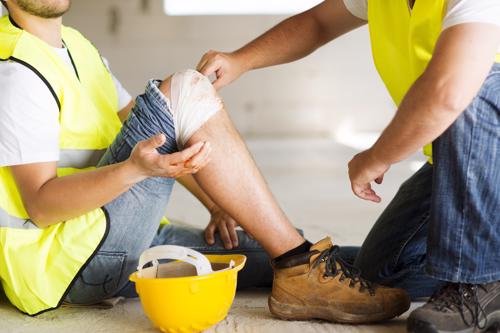September is Baby Safety Month, sponsored annually by the Juvenile Products Manufacturers Association (JPMA). This year, JPMA is helping educate parents and caregivers on safeguarding against hidden hazards in the home. We all know the parents that can be described as heliparents that hover over their child at all times to ensure their safety. I do not see anything wrong with that as there are so many things that can injure a small child. I have listed the top ten hazards in the home below.
Raising a young child takes care and knowledge to ensure the first years are happy and healthy. It’s important to know how to properly use any children’s product, new or used, including cautiously following product instructions and using keenly attuned instincts when caring for baby at all times. This is every parent’s job. According the Center for Disease Control for children less than 1 year of age, two–thirds of injury deaths are due to suffocation and drowning is the leading cause injury death for those 1 to 4 years of age.
There is an abundance of material available today for parents and caregivers looking for safety information regarding juvenile products. This year’s Baby Safety Month campaign and the information contained on this Web site provide insight into providing the safest environment for your child. Safeguarding against hidden hazards in your home goes beyond babyproofing!
Parents and caregivers are encouraged to read through the safety tips, and a special toolkit for industry members, retailers and partners provides ideas and helpful hints for promoting Baby Safety Month to parents nationwide. Messages for all communication outlets have been drafted and are available for members, retailers and partners to customize and distribute. We invite you to celebrate Baby Safety Month 2015 and Safeguard Against Hidden Hazards.
Do you know the top ten hidden hazards in the home?
Top Ten Hidden Hazards in the Home
Magnets
- Small magnets can be easily swallowed by children. Once inside the body, they can attract to each other and cause significant internal damage. Keep magnets high enough on your refrigerator that they are out of reach. If you fear your child has swallowed magnets, seek medical attention immediately.
Recalled Products
- Know if a product you own has been recalled, including second-hand products. The best way to ensure your products are safe is to fill out your product registration card and check for recalls at www.recalls.gov.
Loose Change
- Change can easily wind up on tables or in couch cushions, where curious children could ingest them. A great way to ensure this doesn’t happen is to assign a tray or jar for loose change and keep it out of a child’s reach.
Tipovers
- Tipovers are a leading cause of injury to children. The best way to avoid them is to make sure all furniture and televisions are secured to the wall.
Pot Handle Sticking Out From Stove
- When cooking, it is best that pot handles turn inward instead of sticking out from the stove where little ones may reach up and grab the hot handle. In addition, if holding a child while cooking, remember to keep the handles out of the child’s reach.
Loose Rugs or Carpet
- Area rugs or carpet that is not secured to the floor causes a tripping hazard for little ones who may already be unstable on their feet. Make sure that all corners are taped down and bumps are smoothed out.
Liquid Laundry Packets
- It is estimated that thousands of children have been exposed to and injured by liquid laundry packets. Easily mistaken by children as candy, these pods pose a risk to the eyes and, if ingested, to their lives. It is important to keep these items out of reach of children.
Hot Mugs
- A relaxing cup of coffee or tea can quickly turn into an emergency if hot mugs are left unattended or are placed near the edge of tables where little hands can grab them. Beware of tablecloths that can be pulled down with hot items on top as well.
Cords
- Cords can pose strangulation hazards to children, whether they are connected to blinds, home gym equipment or baby monitors. Keep cords tied up and out of reach of children. Remember to keep cribs away from cords that the child may reach while inside the crib.
Button Batteries
- Button batteries are flat, round batteries that resemble coins or buttons. They are found in common household items such as flashlights, remotes or flameless candles. Similar to coins and magnets, they pose a serious risk if ingested.
– See more at: http://babysafetyzone.org/hot-topics/baby-safety-month#sthash.JgbUDXAg.dpuf






